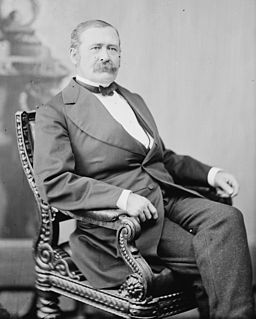 W
WRobert Wilkinson Furnas was the second Governor of Nebraska. Born near Troy, Ohio, and orphaned at the age of eight Furnas was a self-made man. He worked as a farmer, printer, tinsmith, insurance salesman, and postmaster all before getting into politics. He married Mary Elizabeth McComas on October 29, 1845, who died in 1897; and his second was Susannah Emswiler Jameson. He had eight children.
 W
WThomas Jefferson Majors was a Republican politician from the U.S. state of Nebraska.
 W
WDr. George Lorin Miller (1830–1920) was a pioneer physician, editor, politician, and land owner in Omaha, Nebraska. The founder of the Omaha Herald, which later became part of the Omaha World-Herald, Miller arrived in Omaha in 1854, the year the city was founded. He also promoted Omaha as the route of the First Transcontinental Railroad and the Trans-Mississippi and International Exposition in Omaha in 1898.
 W
WJulius Sterling Morton was a Nebraska newspaper editor who served as President Grover Cleveland's Secretary of Agriculture. He was a prominent Bourbon Democrat, taking the conservative position on political, economic and social issues, and opposing agrarianism. Among his most notable achievements was the founding of Arbor Day in 1872. In 1897 he started a weekly magazine entitled The Conservative.
 W
WAlgernon Sidney Paddock was an American politician who was a Republican secretary of Nebraska Territory and U.S. Senator from Nebraska after statehood.
 W
WAlvin Saunders was a U.S. Senator from Nebraska, as well as the final and longest-serving governor of the Nebraska Territory, a tenure he served during most of the American Civil War.
 W
WJohn Milton Thayer was a general in the Union Army during the American Civil War and a postbellum United States Senator from Nebraska. Thayer served as Governor of Wyoming Territory and Governor of Nebraska.
 W
WThomas Weston Tipton was a Senator from Nebraska.